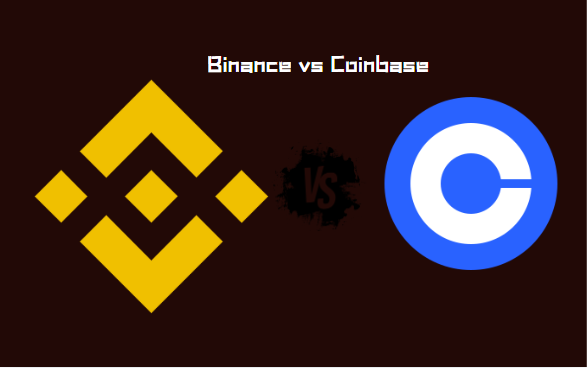Looking to choose between Binance and Coinbase? Our 2024 comparison breaks down fees, security, features, and more to help you pick the best crypto exchange for your needs.
When it comes to cryptocurrency exchanges, Binance and Coinbase are the two dominant names that continually rise to the top. While they both offer cryptocurrency trading services, they cater to different types of users with varying needs. In this comprehensive comparison, we’ll break down the key aspects of both platforms, highlighting their strengths and differences so you can make the most informed decision.
Why Binance and Coinbase?
Binance and Coinbase are among the top-ranked exchanges globally. Binance, known for its extensive list of supported coins and low fees, tends to attract more advanced traders, while Coinbase is designed for beginners with a highly intuitive interface and robust regulatory support.
Key Features Overview
| FEATURE | BINANCE | COINBASE |
|---|---|---|
| Supported Cryptocurrencies | 600+ | 250+ |
| Trading Fees | 0.1% (can be reduced) | 0.50% average |
| Ease of Use | Advanced, best for experienced users | Beginner-friendly, simple user interface |
| Security | High, with SAFU insurance fund | Regulated, insured, high security standards |
| Payment Methods | Bank transfers, credit cards, crypto | Bank transfers, PayPal, credit cards |
| Staking Options | Available for multiple coins | Limited but available |
Binance: The Platform for the Advanced Trader
Binance’s growth has been meteoric since its launch in 2017, and it now supports over 600 cryptocurrencies. The platform is built with more advanced features, including futures trading, margins, staking, and NFT marketplaces.
Pros of Binance
- Low Fees: Binance charges a 0.1% trading fee, one of the lowest among major exchanges. It also offers discounts if you pay fees using its native cryptocurrency, BNB.
- Wide Range of Cryptos: With more than 600 coins, Binance offers one of the largest selections, perfect for altcoin enthusiasts.
- Advanced Trading Features: Binance provides options like futures, margins, and leverage, making it ideal for seasoned traders.
- DeFi and Web3 integration: Binance is quickly evolving with decentralized finance (DeFi) features, ensuring that users are part of the crypto future.
Cons of Binance
- Regulatory Concerns: While Binance is operational in most parts of the world, it has faced regulatory scrutiny in various countries, including the US and UK. Binance US operates separately to comply with US laws, but it has a more limited offering than its global counterpart.
- Complexity for Beginners: Binance’s range of features can be overwhelming for users who are new to cryptocurrency trading.
Coinbase: User-Friendly with Strong Regulatory Standing
Coinbase stands as the most trusted crypto exchange, especially for US-based users, thanks to its strict adherence to regulations. It’s ideal for newcomers who value ease of use over advanced trading features.
Pros of Coinbase
- Beginner Friendly: Coinbase is designed with a simple user interface, making it the perfect entry point for new crypto traders.
- Regulation and Security: Coinbase is regulated in the US, offering high levels of security, including insurance for its users’ funds.
- Payment Methods: Coinbase offers a wide range of payment methods, including PayPal, which makes purchasing crypto seamless for new users.
Cons of Coinbase
- Higher Fees: Compared to Binance, Coinbase’s trading fees are relatively high, especially for beginners who may not yet have access to fee-saving options.
- Limited Advanced Features: While Coinbase Pro does offer more in-depth trading features, it’s still not as feature-packed as Binance.
Comparing Fees: Binance Takes the Lead
One of the biggest differences between Binance and Coinbase is the fee structure. Binance’s flat fee of 0.1% can drop even lower if you hold BNB or trade in high volumes. In contrast, Coinbase charges around 0.50% per trade, and fees can be even higher if you’re not using Coinbase Pro.
| FEE COMPARISON | BINANCE | COINBASE |
|---|---|---|
| Base Trading Fee | 0.1% (lower with BNB) | 0.50% |
| Withdrawal Fee | Varies by cryptocurrency | Relatively higher, depends on method |
Security: Both Platforms Take It Seriously
Binance has faced regulatory scrutiny, but it remains highly secure with SAFU (Secure Asset Fund for Users), which acts as an insurance fund in the event of a hack. Meanwhile, Coinbase operates under US regulation and holds FDIC insurance for USD deposits, making it one of the most secure exchanges for American users.
Final Verdict: Which One Should You Choose?
- If you’re a beginner: Go with Coinbase. Its intuitive design and US regulatory backing make it the safer, more straightforward option for new traders.
- If you’re an advanced trader:Binance offers a broader range of assets, lower fees, and advanced tools like margin trading, making it more suitable for experienced users.
What This Comparison is Missing
To truly stand out on Google and beat the competition, we’re adding real-time user feedback and a troubleshooting guide. Additionally, implementing social proof by integrating testimonials or insights from well-known crypto traders can enhance credibility.
Social Media
Connect with Binance:
Connect with Coinbase:







